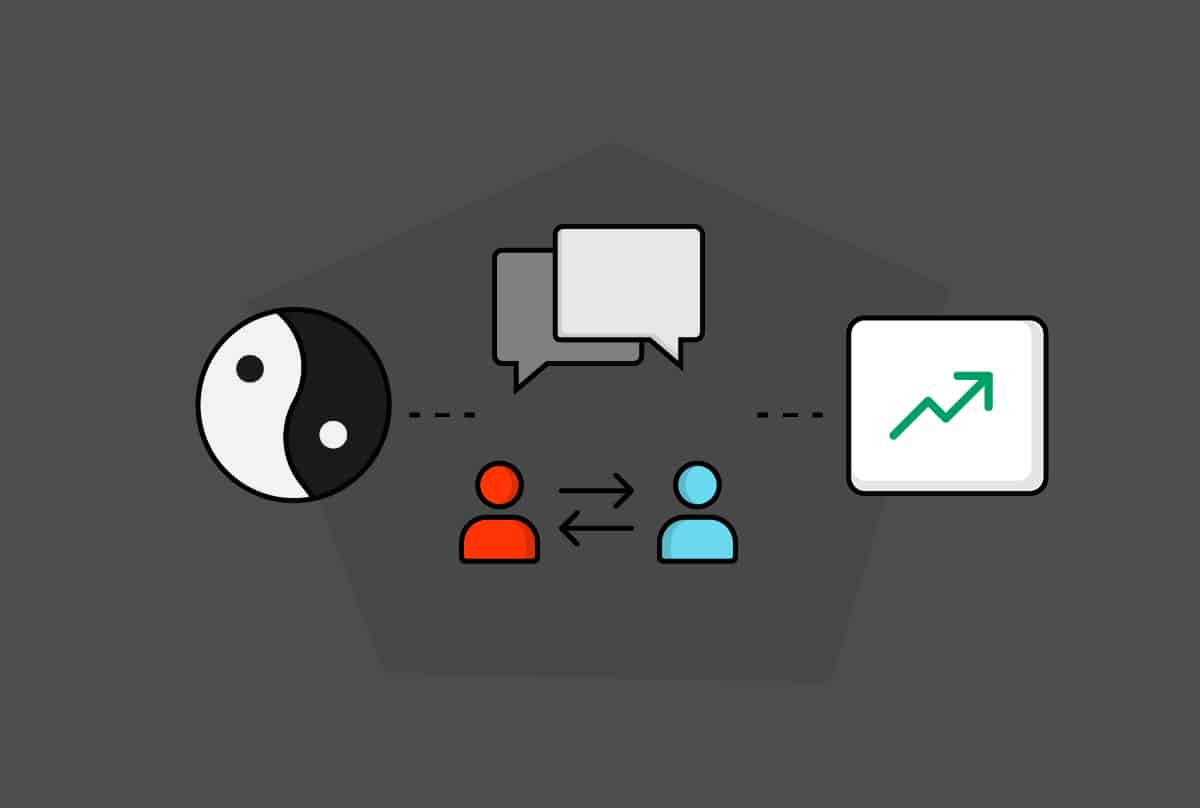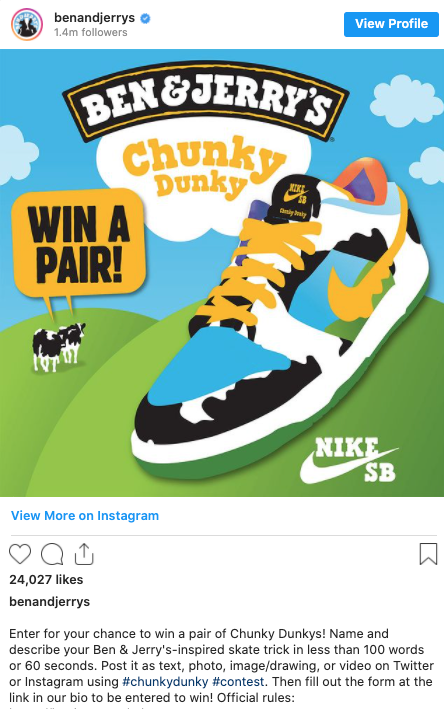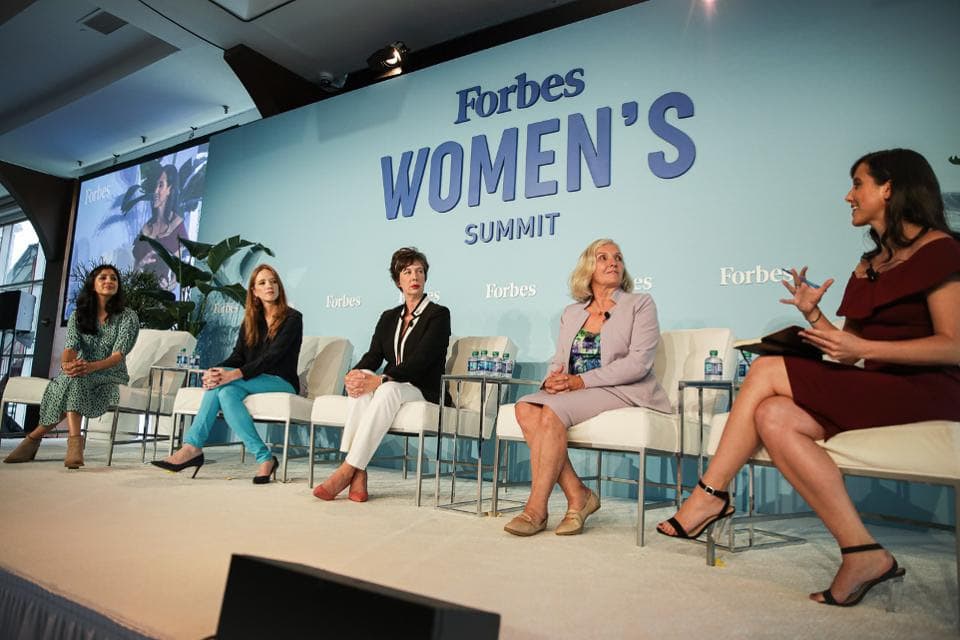Building relationships with competitors is more than trying to avoid an all-out war.
In business, it’s almost natural to look at your competitors as competition. After all, you’re vying for the same customers and your marketing techniques are focussed on presenting your brand as a more appealing option than anyone else’s.
It can become all too easy to think of your competitors as the enemy, but competitive collaboration is actually an incredibly healthy and viable route to take in business.
It’s learning how to turn a potential threat to your business into a tremendous benefit.
It may sound a little strange or maybe even impossible, but it really works. And it doesn’t destroy anyone. Competitive collaboration can help you boost profits, improve brand awareness, attract your target audience, and much more.
READ MORE: How to Make Money With Your Email List
FREE MASTERCLASS: How to Start a Tech Startup And Get Your First Customer In 60 Days
What is a Brand Collaboration?
A collaboration, sometimes just called a brand collaboration or a collab, is when two (or more) businesses team up to create something new. They can create a new campaign, a new product, or a new service, and quite often brands will use competitions or a launch party as a way of boosting engagement on the collab.
Check out the post below, an awesome collaboration between Nike and Ben and Jerry’s ice cream. While neither brand is in competition with each other, it’s a great example of what a collaborative campaign looks like.
Traditionally, neither brand would ever really market for the other’s audience. A sportswear brand most likely would be marketing their products towards customers interested in fitness and health, whereas an ice-cream brand is targeted towards indulgence and those with a sweet tooth.
In their Chunky Dunky campaign, both brands are able to reach an entirely new market.
READ MORE: 5 Best Sales Funnel Software Tools to Power Your Business
Competing Brands
A competing brand is any other brand that you are vying against for sales or business. Competition comes in all forms, with some competition being more direct than others.
For example, if you run a hot dog stand, someone in direct competition with you may also open a hot dog stand on the same street, perhaps even charging lower prices than you. Alternatively, they may open an ice-cream stall. While they’re not selling the same product, they are selling within the same food and beverage industry.
The reason you take out sponsored posts, craft your marketing strategy, plan, assess, and monitor, is to set yourself apart from other brands as a unique and appealing option. You want customers to choose your brand over all other competing brands available to them.
READ MORE: The Ultimate Guide on How to Start a Digital Magazine From Scratch
How Competitive Collaboration Boosts Your Business
When you are in competition with another brand, you are driven to achieve results and come out on top.
Sure, this is a great motivator to push your boundaries and improve your business plan, but as with everything, there’s a downside.
The pressure of competition comes with stress, anxiety, and a little bit of envy. If your product outsells your competitors one week, you may celebrate on the inside but then follow it up with the pressure of following up the win to keep ahead. If your competitor does better, you begin to question everything you’ve ever done.
This is why collaboration can help to flip the script in your favour.
When you are collaborating, you’re still being driven to achieve results, but you’ve removed the competitive anxiety that comes with it. Instead, you and your competition are suddenly united in the same goal, and success is suddenly a joint venture.
Many companies have been taking advantage of this trick for decades. It used to be a nice addition to an overall business strategy. Today, it’s becoming an integral part of it.
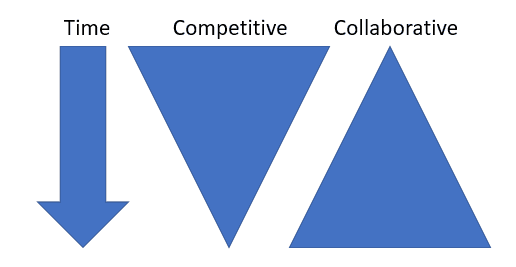
As time passes, the competitive approach loses its edge and collaboration makes more of an impact. We’re not saying that your competitor is completely dominating your market, we’re showing you instead that collaboration can help to improve your company’s reach within a market that is already interested in your area of business.
READ MORE: How to Develop Powerful Business Core Values and Mission Statements
What’s The Difference Between Collaborating and Co-Branding?
It’s easy to get the two confused, but the slight difference between the two is that co-branding is more branding oriented, whereas collaboration is more of a marketing effort.
For example, in a co-branding partnership, two brands will come together to create a new product or service that reflects both brands equally.
When “Star Wars: Episode VII The Force Awakens” hit cinemas in 2015, Lucasfilms partnered with makeup brand CoverGirl to release a limited edition Star Wars range. Developed by makeup mogul Pat McGrath, the collection melded together two unlikely markets: Star Wars fans and Makeup lovers.
In a collaboration marketing setting, it’s unlikely you’ll see both brands meshing together in this way.

READ MORE: Building the Perfect Sales Funnel for Your Shopify Store
Examples of Successful Competitive Collaborations
Microsoft + Intel
One of the most famous competitive collaborations is Microsoft and Intel.
They created Wintel Alliance, in which Intel worked on hardware, and Microsoft created the software. While the alliance has since fizzled out, the two giants collaborated to build software and hardware platforms and brought their tech to virtually every home in the world.
READ MORE: We Went From 0 to $50,000 in Sponsorships in 4 Weeks & How You Can Too!
Pfizer + Merck
Another successful example of competitive collaboration is a powerful alliance between Pfizer and Merck. These pharma companies entered a strategic partnership to bring new cancer treatments to the market as soon as possible.
Vimeo + YouTube
Video hosting superpowers YouTube and Vimeo have a similar relationship. In 2019 during the ForbesWomen Summit, Vimeo CEO Anjali Sud announced a collaboration allowing creators to publish their videos to YouTube.
When asked about the collaboration, Sud said: “What we ended up doing was actually building a partnership with YouTube to help our creators natively publish their videos to YouTube and Facebook and LinkedIn and Twitter.”
“What it unlocked was actually a totally new strategy for our company,” Sud said. “One of the biggest value-adds in our product, and it all came from flipping the script in terms of how you think about whether someone is a competitor or a partner, and prioritizing the problem you want to solve.”
READ MORE: How to Build a Profitable Marketing Strategy
How Can Collaboration Help You and Your Brand?
When we talk about collaboration in this article, we aren’t referring to working with influencers, we’re talking about a brand-to-brand collab. Working with influencers is a little different and yields different results. Collaboration with other brands, in particular brands who are in competition with yours, has a wide range of benefits and positives
Reach A New Audience
Ever wanted to tap into a whole other market? This is your chance. Collaboration is a quick way to expose your brand to a new target audience, and if you’re working with a competitor, an audience that already has an interest in what you’re selling.
Consider the genius collaboration between Uber and Spotify, where the collaboration allowed riders to play their own music in Uber cars. Both brands identified a link between their audience and targeted that middle ground. Customers of Uber are more likely to download Spotify to enhance their experience, and perhaps existing Spotify users become more fond of the app after using it in an Uber.
Create New and Engaging Content
You can only market the same product so many times before your customers become immune to it. Brand collaboration with a competitor will enable you to create something new, something that you hadn’t considered before.
READ MORE: Psychographics 101: Everything You Need to Know; How It’s Used in Marketing
Establish A New Identity Angle
Competitive collaborations have the power to alter your brand’s perception just by association.
For example, let’s pretend you own a gardening business that offers high-end gardening solutions for a local district. Your competition is a national gardening franchise that offers cheap, on-site advice from their staff. An innovative collaboration between you and your competitor may be bringing you on as a special guest speaker at monthly events.
As a result, you launch a new campaign positioning your brand as an authoritative specialist, one so reputed that a national business has hired you as a specialist. The franchise can now offer their customers a new expert consultancy service, and you end up with some extra cash on the side.
Inspiration
Collaboration with a competing brand allows you to take a step back from your usual routine and look at things differently. You’re working towards the same goal as before, the success of your brand, but now you’re looking at it through a new lens. Communicating and planning with another brand helps you to gain perspective, it ignites your creativity and pushes you to think outside the box.
Networking
What better way to meet other industry figures than to work with them? Collaboration is all about communication, and when you link up with another company, you’ll meet lots of other people with a common interest of yours.
Education
At Foundr, we are huge fans of learning and education. The lessons you’ll learn in collaboration are invaluable, as it’s two brands coming together with each bringing their own unique skill sets, perspectives, and strengths.
READ MORE: How to Start a Podcast on a Budget
Choosing Your Collaboration Project
The first thing to understand is that even if you’re collaborating with competitors, that doesn’t mean you can just relax all the time. Companies working together are still technically competing with each other, they have just learned how to hide their teeth and claws. That means you always have to be careful about the way you act and the information you share.
Having said that, if you don’t ask, you don’t receive. It’s that simple. Once you start working together, you can always sign a non-disclosure agreement, which can keep the frenemy from hurting your business.
Here are a few types of competitive collaborations you may want to consider:
Support a charity
A charitable cause is the simplest way to start a collaboration. It can give both of you a push toward the negotiation table. As a bonus, of course, you get to help people.
For example, in 2019 MacDonalds and Burger King joined forces to launch the ‘Day Without Whopper,’ campaign. For this campaign, Burger King stopped selling their top-selling product, The Whopper, for a single day in order to re-direct and increase sales to McDonald’s. The reason for this was to help McDonald’s with their annual fundraising campaign of donating $2 to Children With Cancer for every Big Mac that they sell.
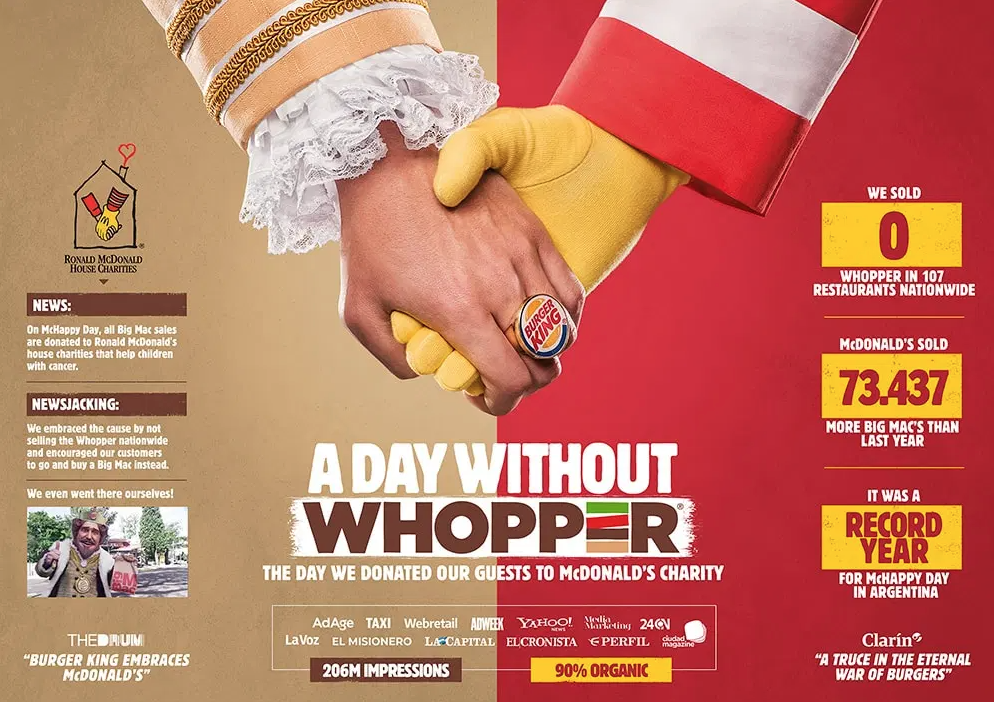
Enter a new market
You make amazing forks, the competition makes awesome spoons. Join together to create cutlery kits. Sounds too simple? That’s exactly what Ford and Toyota did in 2011. Of course, this approach requires a formidable investment from both parties. But it’s better than doing it alone.
Purchase in bulk
Using the fork example above., as a fork manufacturer, you must be buying a lot of metal. Work with your spoon manufacturer competitor to purchase metal in bulk. You can cut costs in the blink of an eye.
Cross-endorsement
You joined the spoon manufacturer to make awesome cutlery kits. But wouldn’t it be great if your kits were selling alongside dinnerware for such big clients as restaurants or hotels? Cross-selling is offering to sell your product as a nice add-on to a larger item. Both companies win. You sell your forks, your partner (the dinnerware seller) offers its clients a full range of products for their dining purposes.
Join a complementary business
Can’t work directly with the snobby spoon seller? Don’t. You can help market the competitors’ company. When people come to buy forks, they probably need spoons too. Refer them to your partner-to-be. You can refer them to the dish-maker as well. Remember, such referrals work both ways.
Just be careful that you are referring your clients to a company that cares about quality. Low-quality products sold by the referred party can damage your reputation.
How Do You Choose Companies to Collaborate With?
Start with your needs and desires.
What do you want to achieve with this collaboration? What’s in it for your company? And, more importantly, what’s in it for theirs?
If you are the one initiating the partnership, you need to sell the idea. So be honest with yourself about what both of your companies can gain from the partnership.
Find out as much as you can about the potential partner and its needs and goals.
- Has the company been in a similar partnership before?
- Does it have weaknesses that you can strengthen?
- What can you offer to make your partnership appealing at first glance?
- What results can you achieve together on a monthly basis (weekly, yearly)?
If your business needs serious help from an “older brother” (in other words, you are basically screaming for help), be willing to become a junior partner in the relationship. You may not get as much from the collaboration, but if your company is in trouble, a partnership like this could save you. But, since you are not bringing as much to the table, you will need to really sell the idea.
Be honest with yourself about what both of your companies can gain from the partnership. Try to come up with as many benefits for your potential partner as possible before asking for collaboration.
Here’s a handy little infographic to summarise all of this:
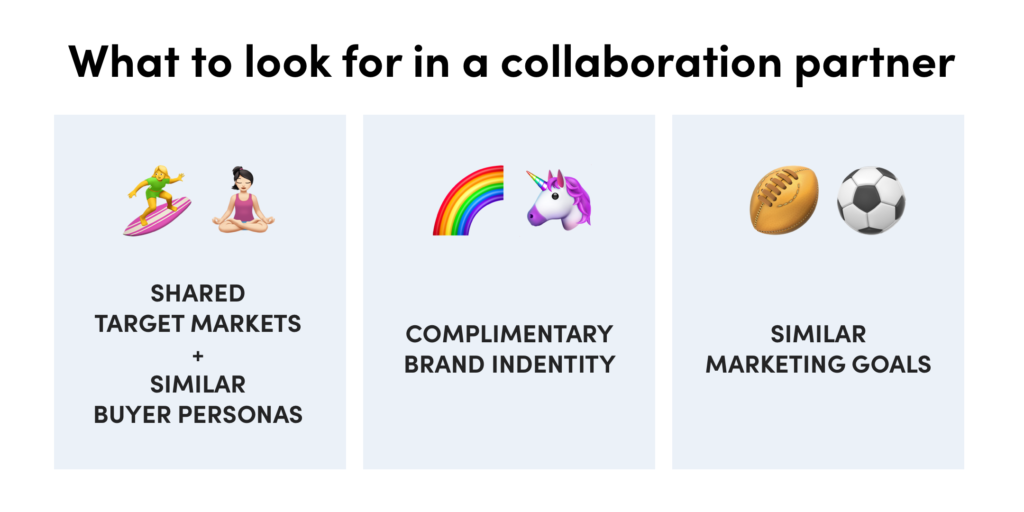
Where Do You Find Competitors to Collaborate With?
When looking for a partner, you may not have to go far, especially if you run a local business. Start with those you are on speaking terms with. If you have already established some type of professional relationship, the collaboration won’t seem that strange to them.
The easiest way to connect and identify competitors to collaborate with is through social media. Check out hashtags, tagged brands, even locations near your business to see who is out there. Make sure you do thorough research on brands to make sure they fit the bill.
Don’t always focus on your direct competitors either. For example, a flower shop’s competitors aren’t just other flower stores down the street, they are also event organizers who regularly include floral arrangements in their services.
READ MORE: The 28 Essential Facebook Ad Terms You Need To Know
How To Keep Things Civil
Be careful. Competitors have their own goals, which may interfere with yours. By blurring the lines between competition and collaboration, you may be dropping your defenses.
There is an infamous case of collaboration going belly-up involving Kraft and Starbucks. The collaboration began with Kraft helping Starbucks with distribution services and brand presence in grocery stores.
Unfortunately, the long collaboration ended in a lengthy and messy court battle. The New York Times’ William Neuman says that “Kraft claims that Starbucks unilaterally decided to end their agreement, and Starbucks says that Kraft failed to aggressively promote its brands, which include Seattle’s Best Coffee, in stores.”
Poor partnership, poor communication, and a poor collaborative effort led to legal battles, fines reaching $2.8 billion, and bad blood between the two brands.
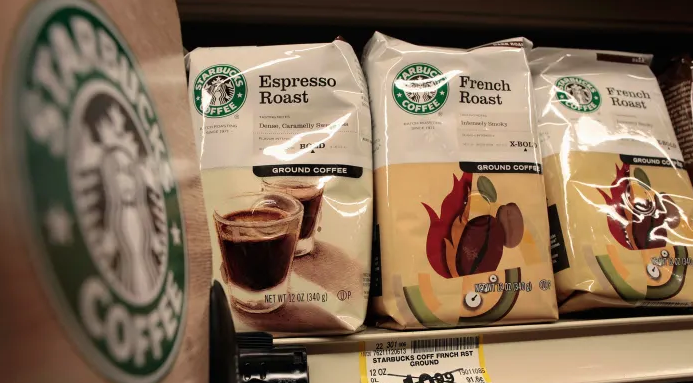
To avoid a mess, here are the questions to ask before diving into a collaboration:
1. Can You Achieve Your Goals Without the Competitor’s Help?
It may take time, money, effort, and so on and so forth. But if you can do your thing without involving another party, why involve it? If a partnership with a competitor isn’t integral to achieving your goals, ask yourself if it’s worth the risks.
READ MORE: 3 Ways to Create a Facebook Sales Funnel That Will Convert Customers on Autopilot
2. What Is the Purpose of the Partnership?
Be clear with yourself about the purpose of this collaboration.
According to B2B experts from Miromind, a good strategy has to juggle many moving parts to be effective. Can you achieve the goal without sharing information and profits with another company? What are the time and geography limits of the collaboration?
Asking these questions can help you single out the boundaries of a fruitful relationship. The extent of the collaboration shouldn’t go beyond what’s needed to be done to achieve the benefits you are striving for.
Try to limit the activities as part of any competitive collaboration as much as possible. For example, you may need a competitor to assist with research and development. Then you can stop working together when you need to sell the product.
Think about the purpose before making a deal. This way you can talk about the limitations in advance.
3. What Are the No-No Areas?
No matter how warm your relationship with the competitor has become, avoiding the no-no areas is vital. Identify the areas that neither of you will ever go into.
For example, the pricing strategy, customer information, sales approaches.
Some of these points may need to be discussed as part of the collaboration. However, they must be limited to the specific collaboration matter and never go beyond it.
This also goes for your employees. Discuss with them what these “no-no” subjects are so they never discuss them with competitive partners. Talk to your employees about the subjects they can and can’t discuss with the people working for the frenemy company.
READ MORE: 10 Instagram Growth Hacks For More Engaged Followers (Without Running Ads)
4. What Are the Limits on Sharing?
Before getting into a relationship with your competitor, you need to identify which information can be shared. It should be limited to the essential data, without which the project can’t go further.
The need-to-know basis is the key to fruitful and powerful collaboration among competitors. The information shared should be protected by the non-disclosure agreement.
Ideally, when you are collaborating with another company on a certain project, you can form a special team, whose only responsibility will be to work on that project. For the duration of the collaboration, that team shouldn’t be making decisions on other matters within your company.
In other words, you can isolate your employees from working outside the collaboration project so that they don’t reveal any unnecessary information.
5. Are You Still Protected?
If you’ve already been working with a company for a while, reassess the relationship. Some collaborations may be moving into areas they shouldn’t. This can happen naturally and inconspicuously.
In order to avoid such a problem, make sure you reassess the relationship on a regular basis. Check if the shared information is still within the limits of what you originally defined.
READ MORE: 30 Expert Tips on How to Get 10k More Followers on Instagram
Competitive Collaboration: Regular Maintenance
Just like your old Ford, relationships with competitors need regular maintenance.
When you are working with your competition, you have to build trust continuously. Some partners tend to impose their opinion onto others, damaging the entire ecosystem around the competition. Others share their opinions and support the environment.
It’s important to nourish mutual respect and understanding on a daily basis. When you are building the relationship, you need to focus on showing your willingness to nurture the ecosystem rather than impose your own.
You give a little and take a little.
If the company you are collaborating with has prior experience with competitive partnerships, check if it may have ended badly. If the company you’re looking to partner with has a history of past misbehavior, then you need to ask yourself if you truly want to work with them.
To keep your new collaboration healthy and happy, try using these methods:
1. Remain a Separate Entity
While you are playing nice, don’t lose yourself entirely. Becoming too dependent on your partner can lead to a disaster. You have to maintain your ability to work separately.
2. Be Ready for the Collaboration to End Tomorrow
You can never predict what your competitor-turned-partner will do next. Collaborative competition is not a true partnership. It’s, well, a collaboration. It can end at any time, so make sure you suffer minimal damage if this happens.
3. Keep Learning From the Experience
Always view your collaboration as one of the best things that could happen to your company. By embracing competitive collaboration, you are learning and getting inspired. It’s an opportunity for growth.
Whenever the partnership ends, if it does, both of you should come out as winners. If you don’t learn the tips and tricks offered by the competition, you’ll be on the losing side.
4. Show the Partner How Much You Care
Nurturing your relationship with frenemies is vital. You don’t just have to keep building trust, you need to keep showing how important the relationship is to the company. Even if it requires a few unwanted actions from your side. Thankfully, this works both ways.
If the partner isn’t doing the same for you, it should raise a big red flag.
5. Think About the Future
Consider the future of your partnership. This strategic collaboration can turn into a financial relationship. The company may have the finances you need to invest in a certain business area. These types of collaboration can eventually turn into a merger or acquisition.
Keep expanding the market for both of you. The relationship between competitors shouldn’t just become better, it should create more opportunities with time. Combine strengths to work on new projects.
All you have to do is play it smart. And you can come out as a winner.
FREE MASTERCLASS: How to Start a Tech Startup And Get Your First Customer In 60 Days
In Summary
The bottom line is that no matter how small your company or how little you feel you can bring into a relationship, you’ve got to try a competitive collaboration.
A careful approach to choosing the right partner coupled with well-thought-out limits and regular maintenance can help your business thrive.
Do you have any questions left about competitive collaboration? Or perhaps you have your own pointers to share? Hope we’ve raised a lot of questions and ideas—please share them in the comments below!
